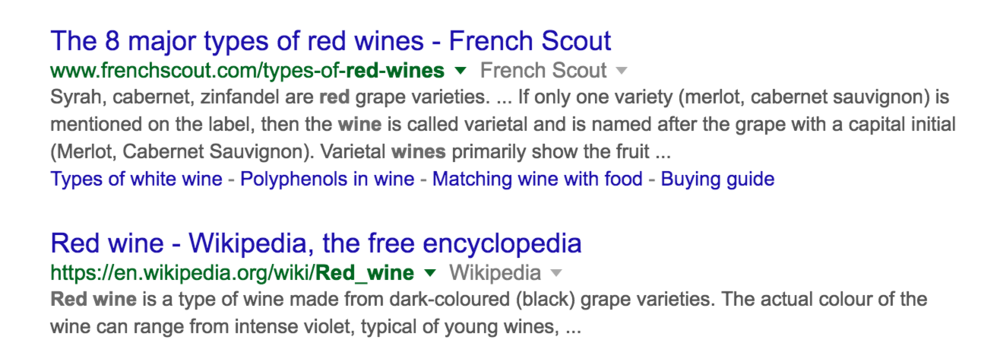Hey you! Welcome back to our series on blogging!
In our first blog, we told you why it is important to start a blog. In our second post, we told you how to get started with the whole blog thing. In today’s post, we’re talking about actually putting pen to paper (or, more than likely in your case, fingers to the keyboard).

Who has time to write? You do. Forget the excuses, and just start writing. The first few won’t be perfect (hey, they may not even be that good). But keep it up. Ask for feedback from both a friend and a professional to improve your skills. Before you know it, you’ll be blogging like a pro! We’ll show you how to write a great blog in six easy steps.
1. Pick a keyword or two, and write a title.
By now, you have probably had a brainstorm session on coming up with topics. The first step to writing is to pick the one you know the most about (or the most excited about!) and go! The title should be geared towards one key word or phrase. For example, if I was the owner of a winery in Napa, CA, I might have brainstormed titles like:
- 5 Health Benefits to Drinking Wine Every Day
- Which is Better to Serve at a Party, Red or White Wine?
- Pairing Wine with Your Favorite Meats
Notice that all the title include the word wine. This is a highly searched word. To get a little leverage with search engines, we’re narrowing our focus to phrasing instead of just words. The titles above are commonly searched phrases about wine and the questions they ask.
2. Write the first sentence.
The first sentence will likely turn into two or three. Type like you talk (in correct grammar, of course) and see what comes out. You can always go back and edit. In fact, most of our blogs go through several rounds of revising before they are published. Make sure the first paragraph captures your reader’s attention and makes them want to keep reading. Tell them the gist of the article and what they will take away.
3. Make an outline and fill it in with your expertise!
Make a short list of points you want to make. If you are doing a listicle, number them out. If you are writing a longer article, be sure to make notes of all the points you want to make and perhaps add in some links to references you plan on quoting or pulling content from. Don’t be afraid to change up the outline once you start filling it in with data. Who knows, there may be seven compelling reasons to hire a limo driver when you go to wine country instead of just six. Be flexible.
Filling in the outline is the part that will most likely take the longest! Give yourself a good two hours to start. The more you write and the more familiar you get with the subject matter, the faster it will go. This is your chance to show off what you know about your subject and make it interesting to your audience. Keep in mind that most blog posts will be relatively short, about 400-600 words. Viewers generally have 5 minutes or so to find the information they need before moving on.
4. Pick a title and an image or two
Now is the time to revisit the title of your post. Do you need to revamp it in light of the direction of the post? Or did a killer idea pop into your head (The 10 Best Wineries to Visit in Napa)? Whatever the case is, make it a good title that’s SEO appropriate! A fun title is okay every once in awhile especially if it’s an opinion-focused post that doesn’t pertain to your industry. It’s always great to make the title fun and SEO appropriate…so be creative!
Add an image (or five!). Humans are visual creatures, and studies show that blog posts with images get more views and shares than those that do not. For extra points, add a video! Here are some great resources for free images.
5. Pay attention to SEO
SEO sounds so intimidating (like opening a 20-year-old Cabernet). Don’t worry too much at first, because your inner SEO ninja will come out as time goes on and you learn more. To get started on the right track, there are a few things to keep in mind as you write that will improve the SEO of your post.
- Make sure your permalink structure is solid. For example, our root URL is www.parachutemedia.co/. The extension of a blog might be “/ourblog/the-value-of-an-impression”. The extension should reflect the name of the post. If the post name is too long for comfort, shorten the extension, but make sure to include a keyword.
- Make sure keywords and phrases are in the paragraph text, title and paragraph headings. A keyword or phrase in your title will get you higher search result!
- Incorporate images and videos. They add visual interest and add to your blog’s credibility.
- Link to your other blogs within your blog. These are called backlinks, and they tell Google that you’re more credible and helps your rankings.
- Metadata is crucial. In this image, the text underneath the link is the metadata. When returning search results, Google pulls the title of the article along with the metadata to give viewers a preview of your article. Isn’t it cool that you are in charge of what appears on Google for your link? We think so!

6. Write 2-3 social captions as well as secondary images
While you’re in the writing trenches, go ahead and write out 2-3 social captions, keeping the platform and your audience in mind. These will come in handy when you’re ready to amplify your blogs. If your main platform is Facebook and you plan on targeting women with your blog post, make sure the caption is interesting to the targeted age group, as well as informative and click-worthy!
TIP: If your post features “10 tips on…” write 10 captions, one for each tip. Schedule them out over the next 6 months at optimized times for your audience.
Remember, effectively writing blogs takes time. Dive in and give it a try, and let us know if you have questions! We’re happy to help – just bring a bottle of red wine with you, preferably a Napa Cab.

